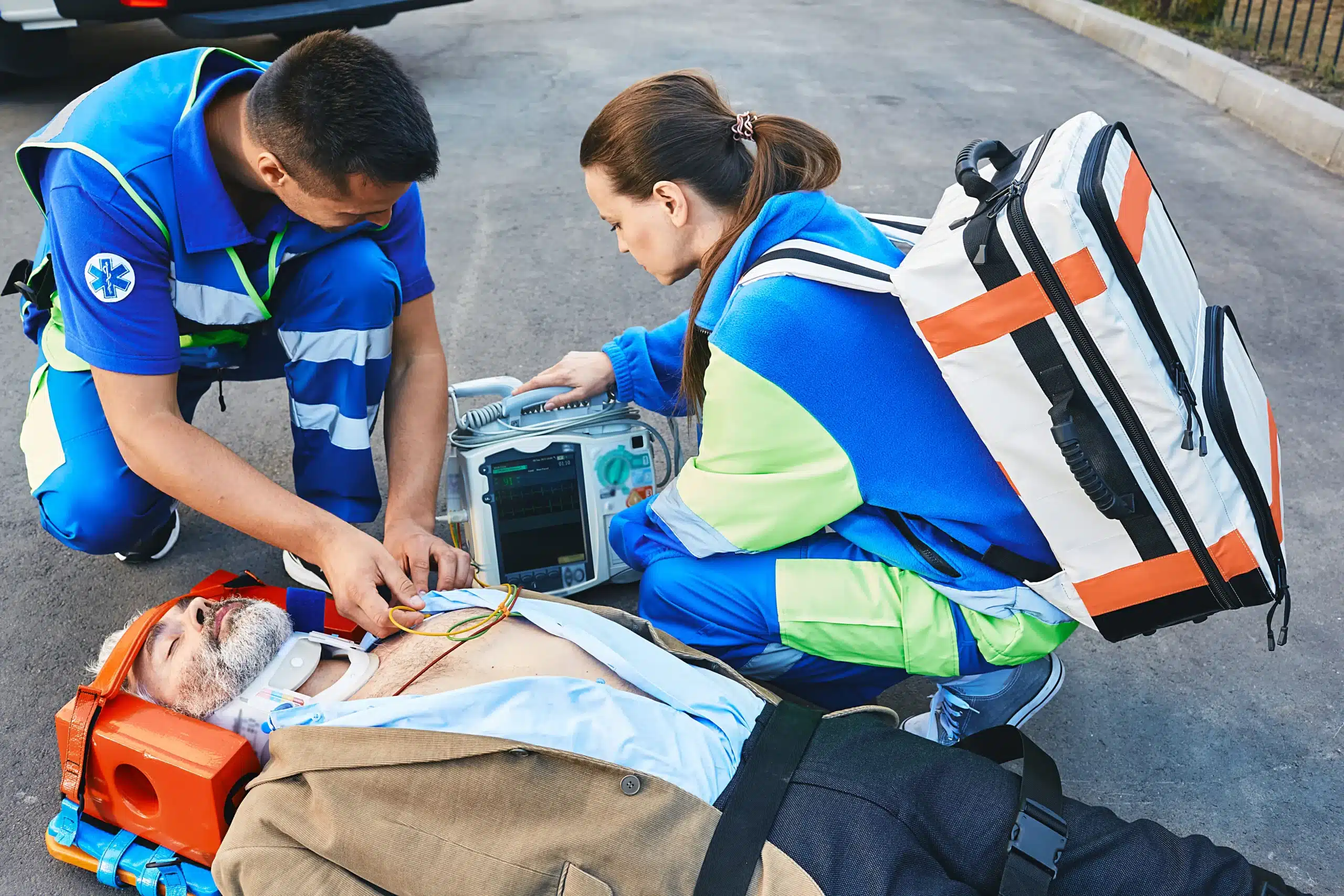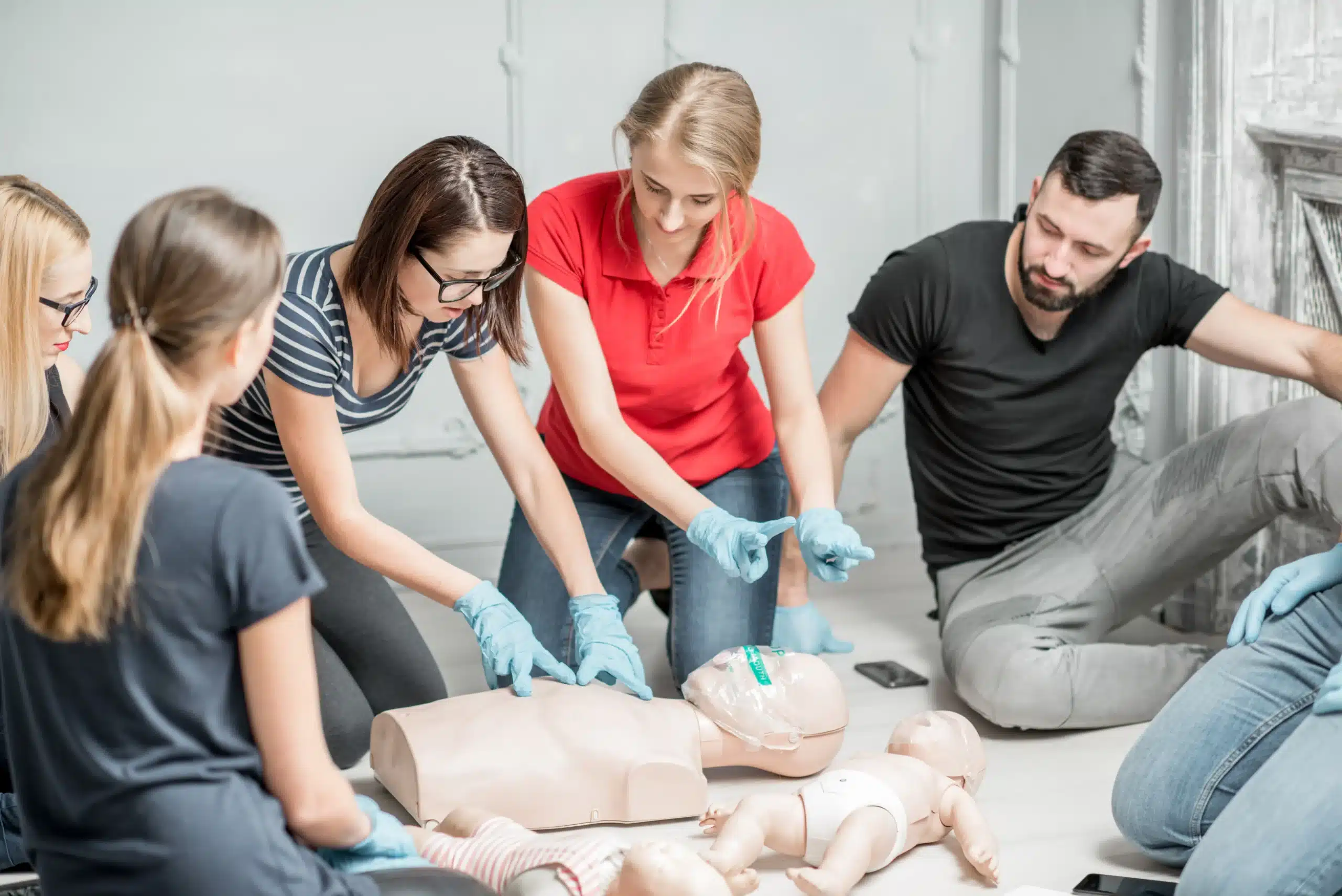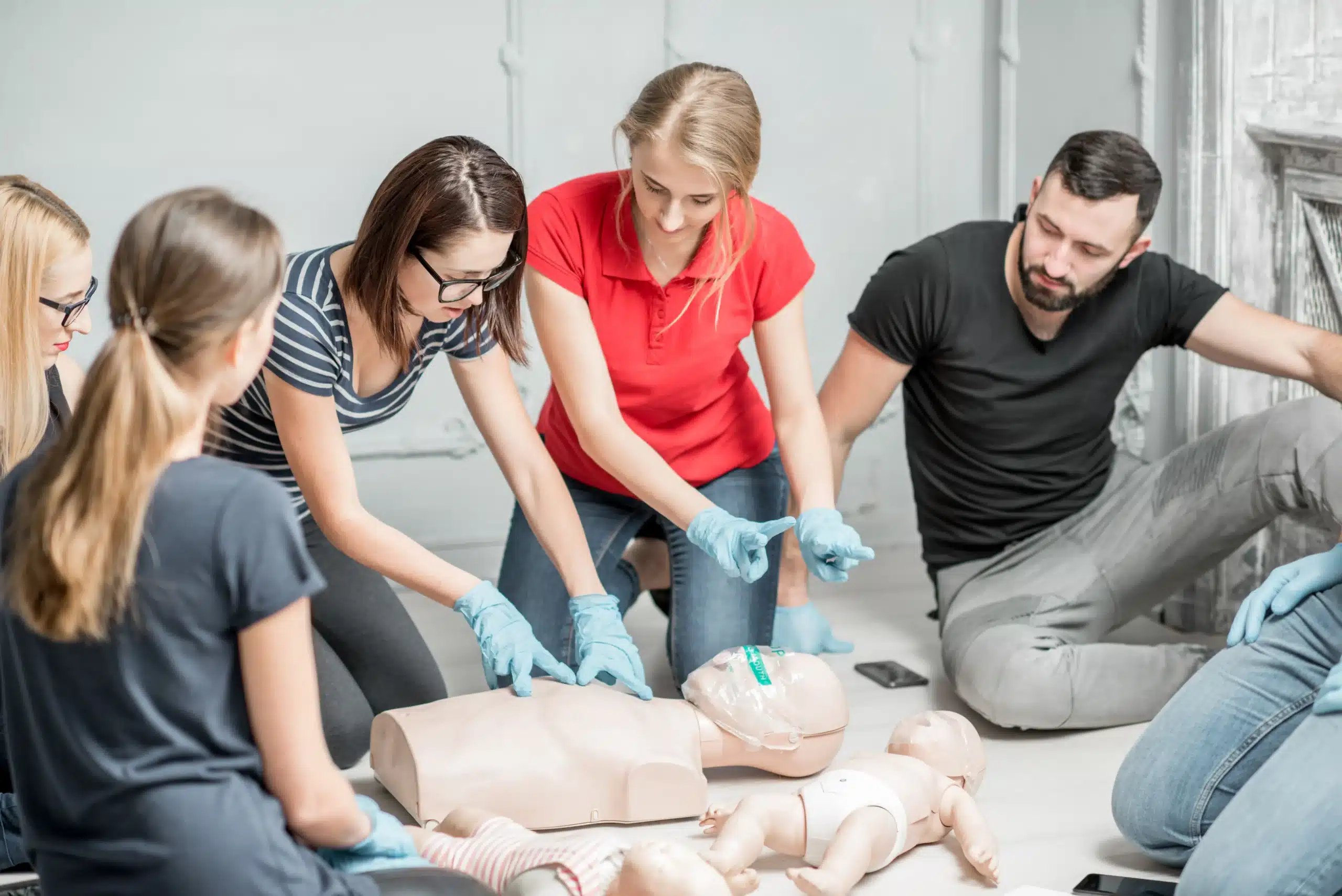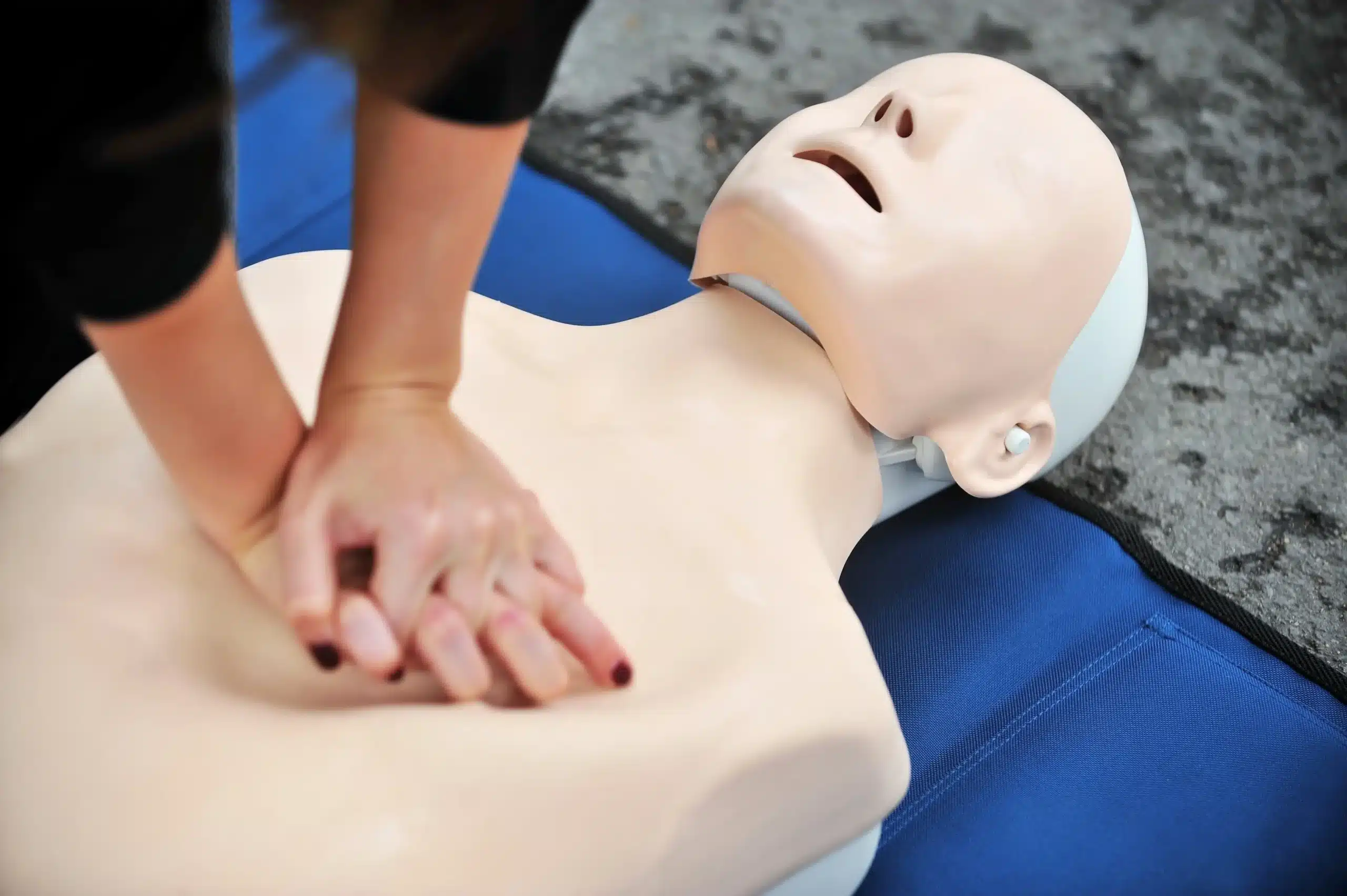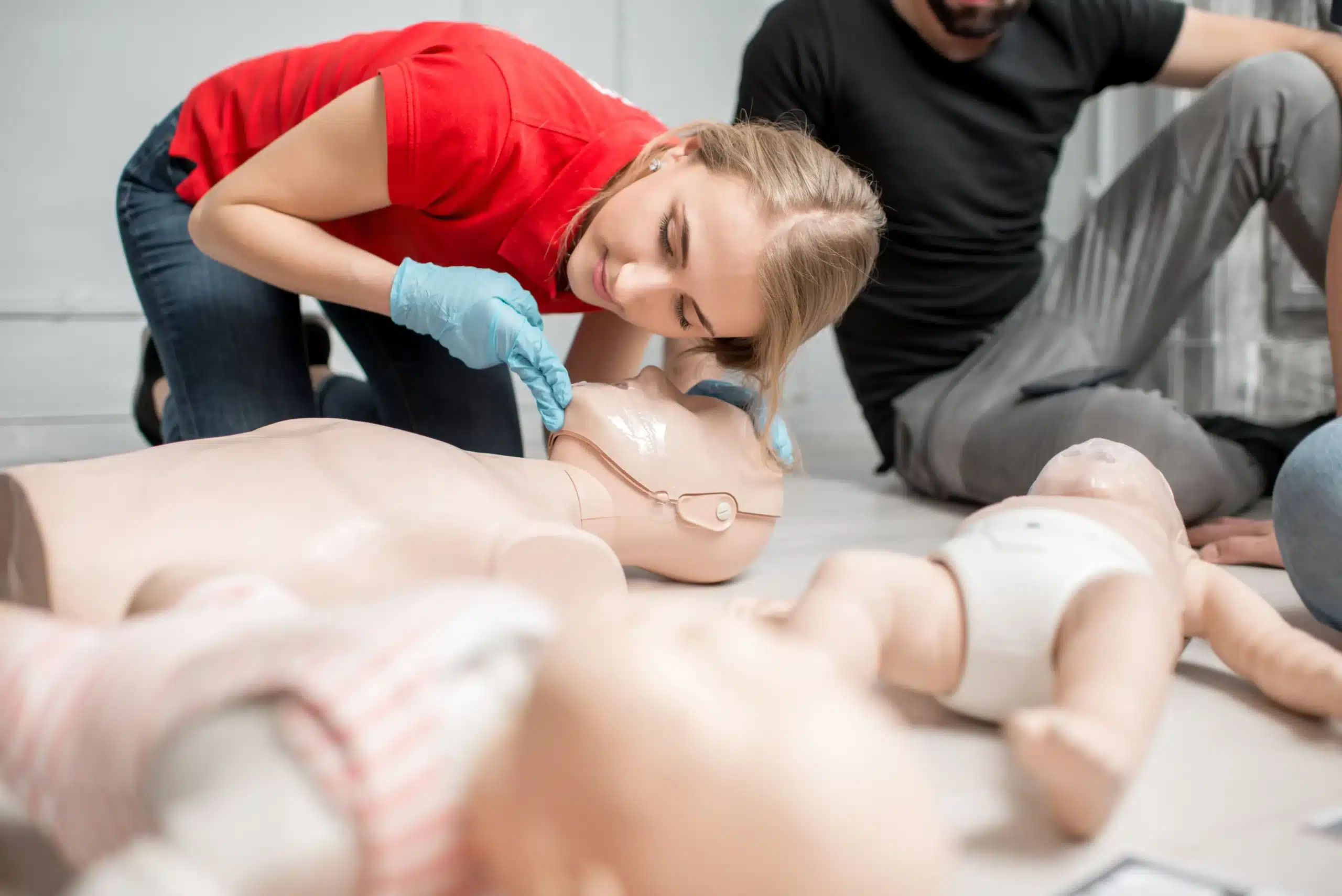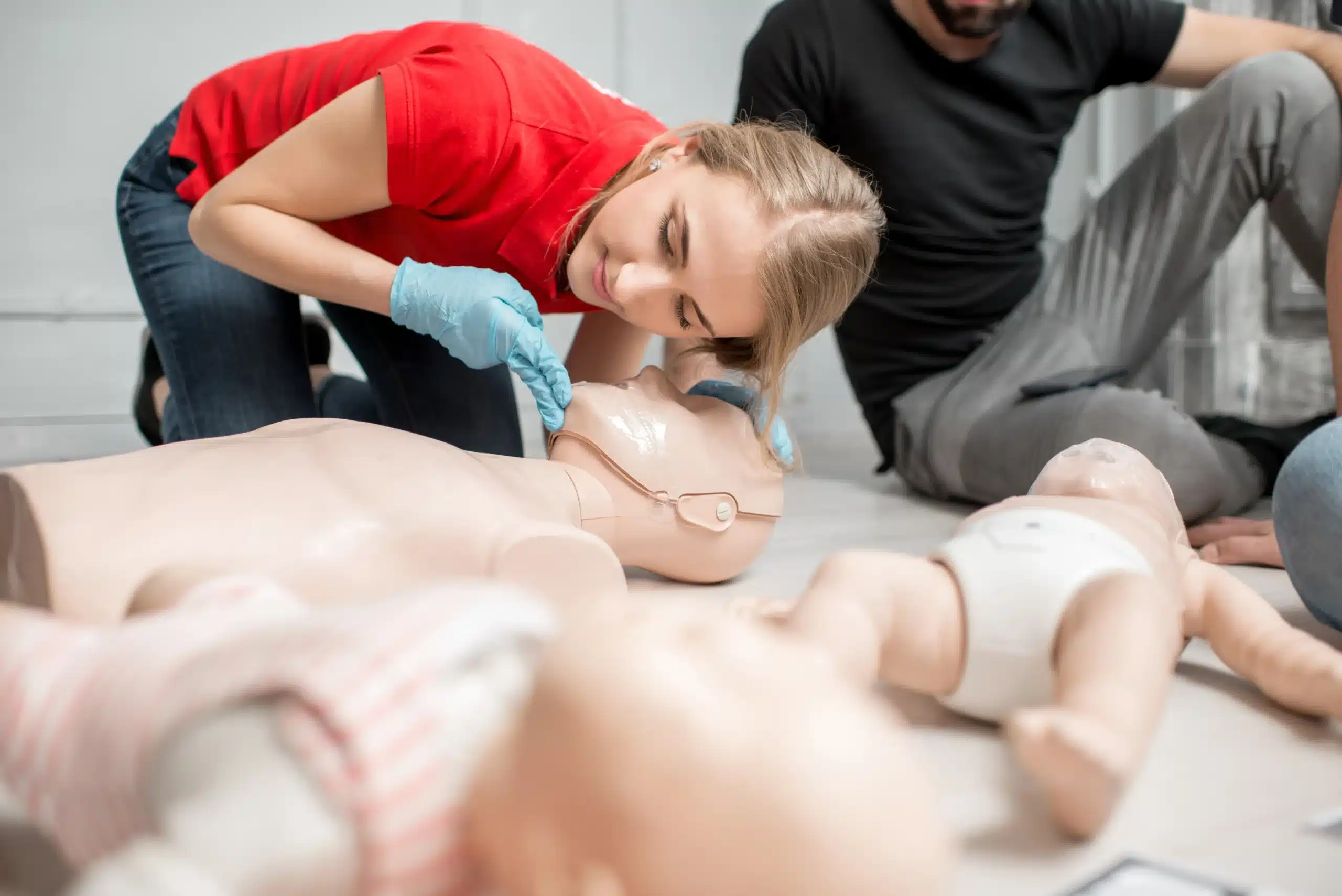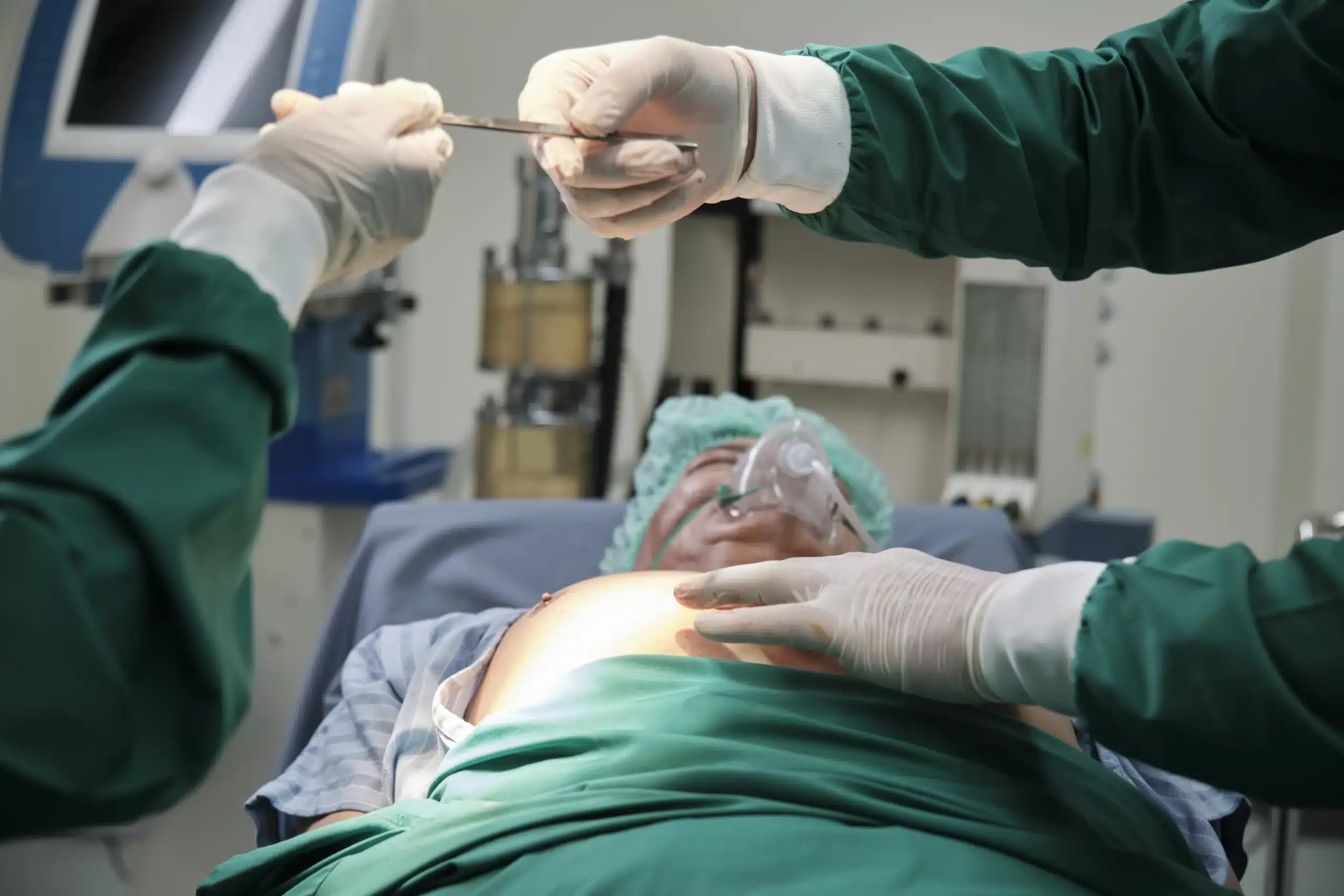Living in Santa Rosa means being part of a vibrant community, and part of that involves being prepared for anything. BLS classes in Santa Rosa provide residents with the skills and confidence to respond effectively during medical emergencies. But with so many options available, how do you choose the right course? This article breaks down everything you need to know about BLS certification in Santa Rosa. We’ll explore the benefits of BLS training, discuss the differences between BLS and CPR, and provide practical tips for finding the right class for your needs and schedule. We’ll also delve into the importance of instructor qualifications and highlight reputable providers like Safety Training Seminars, known for their commitment to quality and convenience. Whether you’re a healthcare professional or a concerned citizen, this guide will empower you to make informed decisions about your BLS training in Santa Rosa.
Key Takeaways
- BLS certification empowers you to act: Equipping yourself with life-saving skills through BLS training gives you the confidence to respond effectively in medical emergencies, whether you’re a healthcare professional or a concerned community member.
- Find the right BLS course for you: Consider factors like cost, schedule, and instructor qualifications when selecting a BLS class. Look for AHA-certified training centers with a strong reputation for quality instruction.
- Stay current with your BLS skills: Maintain your certification through regular renewal courses and continuing education to ensure your skills remain sharp and aligned with the latest guidelines.
What is BLS Certification?
Basic Life Support (BLS) certification is vital for healthcare providers and anyone who might respond to a medical emergency. BLS training equips you with the skills to perform high-quality CPR, use an AED, and help a choking victim. This training covers adults, children, and infants, making it essential for positive outcomes in emergencies. All Hearts CPR discusses the importance of BLS for healthcare professionals and how these skills can make a real difference. The training emphasizes early intervention and high-quality CPR, including chest compressions, airway management, and rescue breaths—critical in the moments before advanced medical help arrives. The American Heart Association offers a comprehensive BLS CPR class designed to teach these lifesaving skills. ACLS.com further explains the benefits of BLS training, highlighting how it prepares healthcare providers to effectively manage emergencies.
Find BLS Classes in Santa Rosa
Finding the right BLS class can feel overwhelming with so many options available. To help you narrow down your search, we’ve compiled a list of providers offering BLS certification in Santa Rosa, including our own programs at Safety Training Seminars.
Safety Training Seminars
We’re proud to be a woman-owned American Heart Association (AHA) Training Center, offering high-quality BLS, ACLS, PALS, CPR, and First-aid courses right here in Santa Rosa, CA. We understand busy schedules, so we offer these AHA-certified courses seven days a week. This flexibility makes it easier to find a time that works for you. We also offer discounts for group classes, making it a cost-effective option for workplaces and community groups. Our commitment is to provide convenient, high-quality training with excellent customer service.
American Red Cross
The American Red Cross also offers BLS certification and renewal courses in Santa Rosa. Their program, designed for healthcare providers and first responders, covers essential skills like CPR, AED use, and teamwork. These in-person classes typically run for about 4.5 hours. Visit their website to find upcoming class dates and registration information.
Other Local Providers
Beyond Safety Training Seminars and the Red Cross, several other local providers offer AHA BLS CPR classes in Santa Rosa. These courses, often taught by certified AHA Instructors, cover comprehensive CPR techniques and AED usage. A quick online search will reveal additional options, such as CPR Certification Plus, allowing you to explore a range of providers and find the best fit. Remember to verify the instructor’s AHA certification before registering for a course.
Explore BLS Class Structure & Duration
In-Person vs. Blended Learning
BLS classes in Santa Rosa offer flexible learning options, including traditional in-person classes and blended learning formats. In-person BLS training provides hands-on instruction and real-time feedback from certified instructors. This format emphasizes practicing essential skills like high-quality CPR and using an AED in simulated emergency scenarios. For those seeking a more independent learning experience, blended learning combines online coursework with in-person skills sessions. This approach allows students to learn the cognitive material at their own pace before demonstrating their skills in a practical setting. Safety Training Seminars offers various course formats to accommodate different learning styles and schedules.
Typical Course Content
BLS courses cover a comprehensive range of topics to equip healthcare providers with the knowledge and skills to respond effectively in medical emergencies. The curriculum typically includes CPR techniques, AED operation, and how to relieve choking. Beyond these core skills, BLS training also emphasizes critical thinking, problem-solving, and teamwork in medical emergencies. Participants learn how to assess a scene for safety, communicate effectively with team members, and make quick decisions under pressure. Understanding the emergency medical services system, legal considerations, and best practices for patient outcomes are also integral parts of the training. For more information on our course content, visit Safety Training Seminars.
Time Commitment
A typical in-person BLS class takes approximately 4.5 hours to complete. This timeframe allows for thorough instruction, ample practice time, and assessment of skills proficiency. Blended learning courses may have varying time commitments depending on the specific program structure. It’s important to remember that your American Heart Association BLS CPR card is valid for two years after the course completion date. Staying current with your certification ensures you’re prepared to provide the highest quality of care in emergency situations. Check out Safety Training Seminars’ scheduling options to find a class that fits your availability.
BLS Class Costs in Santa Rosa
Knowing the price range for BLS classes helps you budget and find the best value. This section breaks down typical costs in Santa Rosa and highlights ways to save.
Average Pricing
BLS class costs in Santa Rosa typically range from $75 to $150. Several factors influence pricing, including the course format (in-person or blended learning), the training provider, and any included materials. While cost is a consideration, remember that this investment equips you with life-saving skills.
Safety Training Seminars’ Pricing
Safety Training Seminars focuses on providing affordable, high-quality BLS training in Santa Rosa. They offer competitive pricing and a low-price guarantee. Check their website for the latest prices for their BLS certification course. They also offer other certifications like ACLS and PALS.
Discounts and Offers
Look for opportunities to reduce the cost of your BLS class. Many providers, including Safety Training Seminars, offer discounts for groups. Some may also have discounts for students, military personnel, or returning customers. Contact the training center directly to inquire about current specials. Comparing prices from different providers, such as CPR Certification Plus, can also help you find the best value.
Instructor Qualifications & Certification
Choosing the right BLS class means finding qualified instructors. It’s essential to ensure your training comes from certified professionals who meet the American Heart Association’s standards. This section helps you understand what to look for.
Safety Training Seminars Instructors
Safety Training Seminars is a woman-owned AHA Training Center committed to providing high-quality instruction. Our instructors are AHA-certified and bring extensive experience to the classroom. We prioritize a supportive learning environment where students feel comfortable asking questions and practicing their skills. We offer various courses, including BLS, ACLS, and First Aid, all with official AHA certification.
AHA Certification Standards
The American Heart Association sets rigorous standards for BLS instructors. These standards ensure instructors have up-to-date knowledge and follow the latest AHA guidelines. Look for classes taught by AHA-certified instructors to guarantee you receive training that meets these nationally recognized standards. This is especially important for healthcare providers needing certification for their jobs. Our commitment to these standards ensures your training aligns with best practices for CPR and emergency cardiovascular care.
Get Your BLS Certification
BLS certification demonstrates your commitment to providing high-quality care. Whether you’re a medical professional, a caregiver, or someone who wants to be prepared for emergencies, BLS training equips you with essential life-saving skills. A BLS training course covers core concepts like CPR, AED use, and recognizing and responding to life-threatening situations. This knowledge empowers you to act quickly and confidently in an emergency. At Safety Training Seminars, we offer group discounts and a low-price guarantee to make quality training accessible to everyone.
BLS vs. CPR: Key Differences
Understanding the difference between BLS (Basic Life Support) and CPR (Cardiopulmonary Resuscitation) is crucial for choosing the right training. While both aim to save lives, they cater to different needs and skill levels. At Safety Training Seminars, we offer BLS and CPR certification to equip our community with these essential skills.
Scope of BLS
BLS certification covers a broader range of medical emergencies than standard CPR. Think of BLS as CPR+, encompassing the core techniques of CPR—chest compressions, rescue breaths, and automated external defibrillator (AED) use—with additional skills. BLS addresses more complex situations like airway management, using a bag-valve mask, and team dynamics during resuscitation. It’s designed to provide a systematic approach to managing various medical crises, including cardiac arrest and respiratory distress.
Who Needs BLS?
BLS training is typically required for healthcare providers such as doctors, nurses, paramedics, and other first responders. It’s also often a prerequisite for students pursuing medical or healthcare-related fields. Regular BLS training and recertification ensures these professionals stay up-to-date with the latest guidelines and advancements in emergency medical care, maintaining their proficiency in delivering high-quality care during critical situations.
When CPR is Enough
CPR training focuses on the essential skills needed to respond to life-threatening emergencies like cardiac arrest and choking. It’s ideal for anyone who wants to learn basic life-saving techniques, including teachers, coaches, parents, and community members. If you’re not a healthcare professional or first responder, CPR certification provides valuable skills to help in emergencies at home, work, or in your community. You can find CPR classes in Santa Rosa through various providers, including Safety Training Seminars.
Choose the Right BLS Class
Picking the right BLS class is a crucial step towards becoming a confident and effective healthcare provider. It’s not just about getting certified—it’s about finding a course that truly prepares you for real-world emergencies. Here’s what to consider:
Factors to Consider
When selecting a BLS class, think about the advantages it offers. A good BLS course provides more than just a certification; it equips you with the skills and confidence to handle emergencies effectively. Solid BLS training offers numerous benefits for healthcare professionals, including better preparedness, improved life-saving skills, and stronger communication and teamwork. These are essential qualities for any healthcare provider, so choose a course that goes beyond the basics and truly empowers you. It also opens doors to career advancement, making it a valuable investment in your future.
Scheduling
Let’s be honest, juggling work, life, and continuing education can be tough. That’s why finding a BLS class that fits your schedule is essential. Look for providers that offer flexible scheduling. Santa Rosa CPR offers courses seven days a week, making it easier to find a time that works for you. Don’t let a busy schedule hold you back from gaining these vital skills.
Provider Reputation
The quality of your training depends heavily on the provider you choose. A reputable provider will have experienced instructors, up-to-date materials, and a commitment to delivering high-quality education. Safety Training Seminars is known for its commitment to excellence in BLS training. Look for providers who prioritize hands-on training and offer comprehensive instruction in CPR and AED use, as highlighted by CPR Certification Plus. A well-structured course from a respected provider will give you the confidence and competence to respond effectively in critical situations.
Maintain Your BLS Certification
Keeping your BLS skills sharp is crucial, especially in healthcare. This section covers how to maintain your certification and why it matters.
Renewal Requirements
BLS certification, like most healthcare certifications, requires regular renewal. The American Heart Association (AHA) states that BLS CPR cards are valid for two years. To stay current and compliant, healthcare professionals must renew every two years. The Red Cross also offers recertification courses as your expiration date approaches. Plan ahead and schedule your recertification course to avoid any lapse in your credentials. At Safety Training Seminars, we offer convenient BLS renewal courses in Santa Rosa to help you stay up to date.
Importance of Training
Regular BLS training offers significant benefits for healthcare providers. It’s not just a requirement; it’s an investment in your skills and ability to provide effective care. Solid BLS training builds confidence and reinforces essential life-saving techniques. It also ensures you’re meeting regulatory requirements and can contribute to career advancement. Proficiency in BLS means you can quickly assess a patient and provide immediate interventions, potentially making a critical difference in their outcome.
Continuing Education
Beyond initial certification and renewal, ongoing BLS training is essential. Healthcare is constantly evolving, and staying informed about the latest techniques and guidelines is crucial for providing the best possible care. Continuing your BLS education ensures you’re using current best practices. This commitment to continuous learning benefits your patients and demonstrates your dedication to professional development. Consider exploring advanced certifications like ACLS or PALS to further expand your skillset.
Prepare for Your BLS Class
Getting ready for your BLS class in Santa Rosa? A little prep work goes a long way. Here’s how to make the most of your training:
-
Understand the Course Content: The American Heart Association BLS CPR course covers essential skills like performing high-quality CPR, using an AED, and responding effectively to cardiac emergencies. Reviewing these topics beforehand can deepen your understanding during the class.
-
Know What to Expect: BLS courses are hands-on and designed for healthcare providers. You’ll learn about scene safety, patient assessment, and how to communicate and work effectively as a team in emergencies. Being aware of these elements ahead of time will help you actively engage with the material.
-
Bring Necessary Materials: Most classes provide materials, but it’s always smart to double-check with your chosen provider. You might want to bring a pen and notebook for taking notes. Also, have any prior certification cards on hand, especially if you’re renewing or upgrading your certification.
-
Certification and Cards: After successfully completing the course at Safety Training Seminars, you’ll receive your official American Heart Association certification card that same day. This card validates your training and is essential for healthcare professionals.
-
Consider RQI Programs: For a modern and efficient approach to BLS training, look into Resuscitation Quality Improvement (RQI) programs. RQI offers a streamlined path to certification while emphasizing continuous quality improvement in resuscitation practices. It’s a valuable option for busy professionals.
BLS Training’s Impact on Healthcare
BLS training plays a vital role in healthcare, equipping professionals with the skills and confidence to handle emergencies effectively. From improved patient outcomes to stronger team dynamics, the benefits of BLS certification are far-reaching.
Enhanced Life-Saving Skills
BLS certification provides healthcare professionals with essential skills to respond confidently during life-threatening situations. Training covers core life-saving techniques, including high-quality CPR, using an AED, and relieving choking. These skills are crucial for immediate intervention in emergencies like cardiac arrest and respiratory distress. As highlighted by Kaiser CPR, BLS teaches healthcare providers how to deliver effective CPR, a cornerstone of successful resuscitation. This training empowers professionals to make a real difference in patient outcomes.
Improved Response & Confidence
Beyond technical skills, BLS training instills confidence in healthcare professionals. Knowing they possess the training to handle emergencies reduces hesitation and improves response times. This confidence translates to a more effective and controlled response, leading to better patient care. Integrity Health Education emphasizes how BLS training equips professionals with the knowledge and skills to manage emergencies, fostering a sense of preparedness and assurance. This increased confidence can be invaluable in high-pressure situations, allowing healthcare providers to act decisively and efficiently. BLS training is also a valuable asset for career advancement, demonstrating a commitment to high-quality patient care.
Team Coordination in Emergencies
Effective teamwork is paramount in healthcare emergencies. BLS training emphasizes clear communication and coordinated responses within a team. This training fosters a collaborative environment where healthcare professionals can work together seamlessly, ensuring efficient and effective patient care. Improved communication, as highlighted by Integrity Health Education, is a key outcome of BLS training, facilitating smoother team interactions and better patient outcomes. By promoting a shared understanding of protocols and procedures, BLS training strengthens team cohesion and preparedness for various emergency scenarios.
Related Articles
- BLS Certification for Healthcare Providers in Santa Rosa – Santa Rosa CPR Classes
- BLS Classes in Rohnert Park: Your Complete Guide – Santa Rosa CPR Classes
- ACLS Courses in Rohnert Park: Your Complete Guide – Santa Rosa CPR Classes
- BLS CPR Classes in Santa Rosa, CA – Santa Rosa CPR Classes
- Low Price Guarantee CPR Classes in Santa Rosa, CA
Frequently Asked Questions
Is BLS certification the same as CPR certification?
Not exactly. CPR is a core component of BLS, but BLS training covers a wider range of skills, including using a bag-valve mask, advanced airway management, and team dynamics during resuscitation. It’s designed for healthcare providers and those responding to medical emergencies in professional settings. CPR certification, on the other hand, focuses on the fundamentals of CPR and AED use and is suitable for anyone who wants to learn basic life-saving skills.
How long does a BLS class take, and how long is the certification valid?
A typical in-person BLS class lasts about 4.5 hours. Blended learning options, combining online and in-person training, may have different time commitments. Once certified, your American Heart Association BLS CPR card is valid for two years.
How much does a BLS class in Santa Rosa typically cost?
BLS classes in Santa Rosa generally range from $75 to $150, depending on the training provider, course format, and included materials. It’s a good idea to compare prices and check for discounts, often available for groups, students, or military personnel.
What should I look for when choosing a BLS class provider?
Look for a provider with American Heart Association-certified instructors, up-to-date training materials, and a focus on hands-on practice. Consider factors like class schedules, provider reputation, and whether they offer additional certifications like ACLS or PALS. A reputable provider will give you the confidence and skills to respond effectively in real-world emergencies.
How can I renew my BLS certification when it expires?
You’ll need to take a BLS renewal course before your current certification expires. Many providers, including Safety Training Seminars, offer these courses. Check with your certifying organization or local training centers for available renewal options and scheduling. Staying current with your certification ensures you’re always prepared to provide the best possible care.
